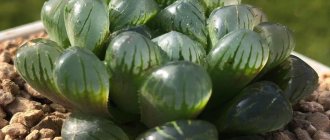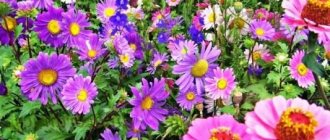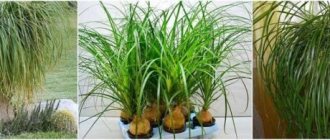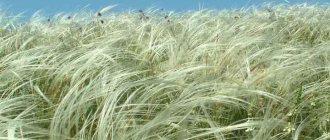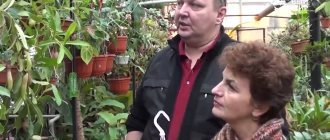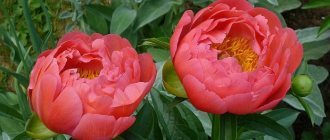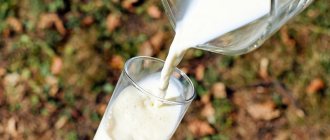Flies are annoying creatures that do not lend themselves to any tricks. The constant use of chemicals to kill these insects is not very beneficial for people and is harmful to the environment. Sometimes a plant that eats flies can be used to ward off pests. These species of flowering plants have evolved independently of each other, having adapted to feed on living organisms due to the paucity of soil in the places where they grow. Basically, these are swampy lowlands, where there are almost no microelements in the soil.
Nepenthes
This is a trap flower with water lily shaped leaves. There are more than 130 varieties that grow in Sumatra, India, China, and Australia. There is also another name for the flower - monkey cup. That's what scientists called it when they conducted research and witnessed how monkeys drank from them the water that accumulated after the rain.
This flytrap looks like this: a 15 meter tall vine with shallow roots. On the stem part of the plant there are leaves with peculiar tendrils. They protrude from the tips of the leaves.
Interesting!
At the end of the antennae there is a small vessel that, when expanded, forms a deep cup; this is a trap for the insect. This trap contains a watery or sticky liquid that attracts flies.
Sarracenia (left) and Nepenthes (right)
How and what to feed a Venus flytrap
The name of the plant is “telling,” but this flower feeds not only on flies. In addition to annoying dipterans, the leaves catch crawling ants, spiders, slugs, and even mosquitoes, bees and wasps. Live prey caught and digested by the Venus flytrap acts as a nitrogen fertilizer necessary for the production of protein in plant cells.
The flower becomes hungry with a lack of nitrogen and the active development of new leaves during the flowering period. Then the green predator will need to be fed with live insects; it does not feed on dead ones. Feeding is needed no more than once or twice a month.
Exotic nutrition rules:
- worms and insects with hard shells are not suitable;
- feeding during the rest period should be stopped;
- do not give meat and similar products, since traps only need live prey;
- insects must be completely contained in the trap;
- After moving from the store and replanting, when the light changes, the flycatcher should not be fed.
It's fun to watch the trap slam shut, but you shouldn't touch the sensitive leaves often. They spend a lot of energy on the operation of the fishing apparatus. Vain movements of the firecracker without obtaining food can lead to premature death of the trap.
Stapelia
This is a cactus that eats flies. It has no stem, but its fuzzy flowers with spots resemble a sea creature. Another name for the plant: star cactus, large toad flower. May also be called starfish. The diameter of the flowers is about 40 cm. The smell of decaying flesh is very attractive to flies, beetles and larvae. They crawl into the central part of the plant, where they die.
On a note!
Place of growth of slipway South Africa. But the flower is often grown in Russia to decorate a stone garden or home landscape.
Possible problems during cultivation
If you follow the above rules, you can ensure healthy growth for the Dionea flycatcher, and for yourself the joy of observing and caring for the exotic. Dionaea muscipula can live 15–20 years in indoor conditions.
Healthy plant
In unsuitable conditions, the plant's eyelids will be short. Possible problems and causes:
- yellowing of leaves due to the accumulation of calcium in the soil when watering with hard water;
- leaf falling when the soil dries out;
- brown spots on leaves due to sunburn;
- brown leaves in too dark and cold place.
The death of old leaves of Dionaea occurs constantly. Young leaves grow from the center of the rosette. Traps that have exhausted their reserve of pops die off. Blackened leaves are not pulled out, but cut off, leaving a petiole of 0.5 cm.
Lysiheaton
It mainly grows near swampy areas, river banks and ponds in North America. The Indians used it for cooking and treating various diseases.
This is a stinky plant that smells like a scared skunk. That's why it was nicknamed skunk cabbage. This smell attracts insects. This plant can also raise its temperature to survive the winter.
Plants that eat flies
Prevention of flies
These frightening factors are a good reason to fight against unpleasant insects.
But you should understand: in order not to start a war with flies, lovers of dirt, certain preventive measures are necessary:
- maintaining cleanliness in the house at the proper level: frequent wet cleaning, timely disposal of garbage;
- lack of any food on the table;
- regular cleaning of the livestock pen (if any), watering the manure with karphos solution;
- mosquito nets on windows;
- pots of geraniums on the windowsills of the house;
- plants with a pungent odor planted on the site: tansy, lavender, wormwood, elderberry and bird cherry bushes.
Compliance with this series of rules will not only help you get rid of annoying insects, but will not force you to face such a problem as flies indoors.
Sources
- https://nzs-rst.ru/muhi/trava-otpugivayushchaya-muh.html
- https://notklop.ru/muhi/2-fakty/25-kakoj-zapah-otpugivaet-muh/
- https://kursi-floristiki.ru/sredstva/kakie-rasteniya-otpugivayut-muh.html
- https://KatalogPoleznogo.ru/dom/30-sposobov-vyivesti-muh-iz-kvartiryi-doma-dachi.html
- https://WikiParazit.ru/babochki-i-moshki/rasteniya-i-narodnye-sredstva-kotorye-otpugivayut-muh.html
- https://stroy-podskazka.ru/muha/zapahi-ne-lyubyat/
- https://antinasekom.ru/kak-borotsya-s-muhami.html
- https://nasekomye-vrediteli.ru/ot-muh-trava.html
- https://hloptarakan.ru/muhi/chto-otpugivaet-muh.html
Devil's fingers
This mushroom at first looks like a chicken egg with a heterogeneous lumpy surface, gray in color and brownish and pinkish spots at the base. But when its blades open, it looks like a star-shaped flower with many tentacles. Inside the plant is lumpy, spongy with dark mucus. Insects are attracted to the cadaverous smell that the plant emits. A photo of a flower that eats flies is shown below.
Plants that eat flies
Some interesting facts
Among these insects there are many species with unusual feeding preferences. Let's look at what flies eat in natural conditions:
- There is a special type, cheese flies, that can breed and feed inside the cheese wheel. They are called pyophilides.
- The striped yellow-and-black syrphid, or hoverfly, a wasp-like dipteran, eats flower nectar.
- The larvae of hover flies are distinguished by an enviable appetite: during their development to an adult, each of them eats more than 2 thousand aphids.
- The dangerous Tsetse fly prefers the blood of wild animals, cattle, and people as food. The bite of this African resident can cause incurable diseases of the nervous system and immunity.
Among the flies there are also real predators, for example, ktyri, owners of a sharp poisonous sting. Their food includes mosquitoes, midges, even bees and flies. Interestingly, some types of flies are cultivated by fishing fans. Thus, the blue spring fly is specially bred on bird droppings, pig manure, its food is rotting organic remains, and the insects are also fed with sugar and dry milk.
Darlingtonia
Place of growth: Oregon, California. It grows in springs and swamps, a rare plant. The bulbous leaves form a cavity with an opening for insects to enter. It is located under an airy structure and 2 sharp hanging leaves, they look like fangs.
A crab claw trap is used. When the fly gets inside the plant, it dies. The insect is confused by the light that shines through the plant. They follow thick thin villi far into the depths until they enter the digestive organ. But they will never be able to go back.
What types of carnivorous plants are there?
The term carnivorous plant refers to representatives of the flora that have adapted to catching and digesting insects. With them they compensate for the lack of microelements and proteins. There are more than 600 species of biological insectivores in the world. They catch flies in several ways:
- Active method. Moving plant organs that are capable of capturing insects are used.
- Passive method. After landing, the potential victim is held in place by sticky or slimy surface elements.
The types of traps for specific carnivorous biorepresentatives also differ:
- closing trap-shaped leaves;
- jug-like traps that close after an insect enters;
- sticky and viscous external surfaces;
- suction traps.
Zhiryanka
To lure and digest prey, the plant uses sticky, glandular foliage, similar in principle to duct tape. Nutrients after digestion by the insect feed the soil with mineral compounds. Place of growth Asia, Europe, North and South America. There are about 80 varieties there.
The leaves of this plant are pink or green. There are 2 types of cells that are located on the upper side of the foliage. One of them is the flowering gland, consisting of secretory cells. They produce a sticky mucus that forms droplets on the surface of the foliage. The second cell is sessile glands. They produce secretions that aid digestion. Most species of Zhiryanka feed on insects all year round. But there are also flowers that feed on flies when summer comes. It blooms again, new carnivorous foliage appears.
Plants that eat flies
Caring for a Venus flytrap at home
The exotic should be as comfortable as possible indoors. If you know how to care for a Venus flytrap in your home, the plant will be beautiful and healthy. You need to follow a number of rules, the main one of which is to always keep the soil in the pot moist.
In home floriculture, another genus of this family is well known - Sundew.
Location and lighting
Dionaea flower requires good lighting. Then the flycatcher forms especially large and brightly colored traps.
Places with sufficient natural or artificial light are suitable.
Location requirements:
- The tropical fly-eater prefers windows with an eastern or western orientation. The plant will develop normally on a south-facing window sill, provided it is shaded during the summer at midday.
- In winter, it is advisable to organize additional lighting with a fluorescent lamp in the morning and evening so that the flower receives light for 10–12 hours.
- If the flower lives in an aquarium or florarium, it is necessary to install a 40 W lamp at a height of 25 cm above the plant.
Lighting less than 5–6 hours a day is stressful for the green predator. In our latitudes, the lack of light is felt from late October to early March, which certainly affects the cultivation of exotics. As a result, growth stops and new traps are not formed.
Temperature
Comfortable temperature in summer for the plant is from 22 to 30°C. In May-June, you can take the flower out into the open air - into the garden or onto the balcony, where there is enough light, fresh air and accessible food. A short-term increase in air temperature of more than 30°C is allowed, but constantly hot conditions are not suitable for the plant. Also, the sensitive Venus flytrap must be protected from drafts.
The temperature for keeping in the winter months should be 5–7°C. These are winter dormant conditions. But, if you cannot create them, then the flower in the room will need additional lighting.
Watering
The Venus flytrap has naturally adapted to a monsoon climate with dry and cool winters and heavy rainfall in summer. Water the flower from below - pour settled rain or distilled water at room temperature into the pan. The latter is sold in pharmacies or chemical stores.
Watering from above is not recommended to avoid wetting and rotting of the rhizome. In winter, watering is reduced to 1-2 times a month.
Creating a humid environment
Maintain uniform substrate moisture in the pot with the carnivorous plant throughout the growing season. The Venus flytrap is extremely sensitive to the soil and will die if it dries out.
To prevent this from happening, place the container with the plant in a deep tray and fill it to 1–1.5 cm. Water rises through the holes to the roots. In summer, in hot and dry weather, the flower is sprayed with distilled water, but not abundantly. The proximity to the Cyperus plant is favorable for the Venus flytrap - both need abundant watering through a tray and high humidity.
Watch the video on how to organize a moist environment for a flycatcher:
Soil and nutrition
In the wild, the Venus flytrap grows in peaty or sandy soils. The plant is deprived of soil nutrition and receives the necessary substances by digesting captured insects. Therefore, a ready-made substrate for carnivorous plants or a mixture of high-moor peat and sand (2:1 or 1:1) is used as soil for the flytrap.
The carnivorous flower reacts negatively to lime in water and soil. The substrate should have a pH value in the acidic range (3.5–4.5). If the soil is alkaline, you can acidify it by adding peat moss or apple cider vinegar. In the second case, you will need a solution of 10 ml of vinegar in 1 liter of water. Pour liquid once a month when watering from below. When kept in an apartment, Dionea should be fertilized with highly diluted nutrient mixtures once every 4–5 months.
Transfer
The dishes for the Venus flytrap should not be too wide. An ordinary plastic pot 20 cm high and 10–12 cm wide will do. The plant looks wonderful in a composite pot, but the bottom must have holes.
If the plant was purchased in a store, it should be replanted:
- The flower is carefully removed from the container in which it grew in the store.
- The old soil is carefully shaken off the roots and rinsed with slightly warm boiled water.
- A new pot is filled with special soil for Venus flytraps and watered generously with distilled water.
- When the water is absorbed, make a hole in the middle of the pot where the roots and bulb of the new pet are placed.
- The surface is sprinkled with the same substrate level with the edges of the pot.
- Place the plant in a deep tray filled with 3–5 cm of distilled water.
- Leave the flower in diffused light for 4–6 days, then transfer it to a permanent place.
There is no need to replant the Venus flytrap annually. The soil does not become depleted and, with proper watering, does not become salty. A carnivorous plant is replanted if the pot becomes too small for the bulb and roots. The best time to transplant is from late February to early March.
Winter dormancy period
Flycatchers are plants that need rest from November to early March. With the onset of cold weather, changes occur in the body of Dionaea. Leaves on long stems that grow in summer begin to darken, and small leaves with inactive traps are formed. This is a signal that the flower needs peace. The predator stops feeding in September.
It is recommended to bring Dionaea for wintering in a dry, bright, unheated room, for example, in a stairwell with windows facing south or west. Well-lit basement windows will also work. Occasionally, the soil is sprayed with a solution of the fungicide Fundazol from a spray bottle. Make sure that the substrate is slightly moist throughout the wintering period (3–4 months). In March, the carnivorous plant is returned to a warm, sunny place in an apartment or house. At the end of April or May, the flycatcher begins to actively grow and form traps.
Sundew
They grow in Russia, Siberia and the Far Eastern regions. They can exist even in severe frosts, forming thermal insulation on the buds. In spring, the hunt for flies and other insects begins. The leaves are covered with thin red fibers, they produce droplets in the form of dew. During the first warm months, the Sundew feeds on bugs, then on pollinating insects.
Interesting!
Sundew has a deadly effect on insects, but it is very useful for humans. The plant helps alleviate the condition of epileptic seizures, bronchitis, asthma, and atherosclerosis.
Fly protection for pets
In hot weather, chained dogs suffer more than others from flies. Hungry insects literally gnaw off the tips of the poor creatures' ears; pathogenic microflora immediately settles on the resulting wounds and they begin to rot. To prevent attacks on pets and other living creatures, special preparations that repel flies are used, which, like flea drops, are applied along the spine and on the back of the animal’s head.
To protect cats and dogs in the summer, there are special repellent substances that can be applied to the withers or included in collars. These are, for example, such products as Bayofly, Flybyte, as well as the recognized leader in the fight against flies in yards with domestic and farm animals - Agita. It contains the fly pheromone Z-9 tricosene and thiometaxam, lactose and sugar. The product is dissolved in warm water, mixed well and sprayed on the surface or applied to window openings and strips of paper. It attracts dipterans, which soon die after contact with the toxic substance. The product is used to treat only those surfaces that never come into contact with food and animals.
Answers to frequently asked questions
Why do traps turn yellow?
This is not a sign of Venus flytrap disease. This situation is caused by insufficient watering or watering with too hard water.
Why does the plant not respond to an insect, although all the traps are open?
The main source of nutrition for the Venus flytrap is photosynthesis, as for any plant. She needs insects only to replenish the lack of nitrogen, which she does not receive from the soil. If the flower has enough nitrogen from the last feeding, it will not catch insects.
Why did all the traps turn black?
At the beginning of autumn, this is a sign that the plant is preparing for winter. Inexperienced flower growers often forget about this and throw away a completely healthy flower. If this happened in the summer, most likely, one of the Venus flytrap traps was unable to digest the caught insect and was not cut off in time.
Can Dionea get sick from the bright sun?
A specimen that is less than a year old should be kept in partial shade. The sun will not harm an adult plant. Dionaea can get burned if it stands in direct sunlight for a long time immediately after wintering in a dark room. But even if it loses leaves because of this, it will quickly recover.
Is it possible to water a flower with water passed through the Barrier filter and analogues?
No. This cleaning is not enough. Only reverse osmosis filters and distillers provide the required degree.
Is it possible to flood a plant?
If bottom watering is used, then water is absorbed into the soil in the required quantities. The main thing is not to let it stagnate. You can flood a plant if you water it from above.
Features of the rest period
During the dormant period, the Venus flytrap requires radically different conditions than during the growing season. If they are not provided to it, the plant will live no more than two years.
Preparations for wintering of Dionaea begin at the end of September. Its sign is the cessation of the formation of new leaves.
Old traps turn black and die. The plant decreases in size and may even lose its leaves completely. From this moment feeding is stopped.
The Venus flytrap will require less water, so be careful that it does not stagnate in the tray.
In December, the flower is moved to a room with a lower temperature. This could be a basement or a garage, but it is better to prefer an unheated balcony. It is believed that if Dionaea receives enough light during sleep, this helps maintain its immunity.
Some people keep Dionaea in the refrigerator.
Before storing the Venus flytrap, it is treated with a fungicide (both the remaining leaves and the soil surface).
The pot is placed in a plastic bag and placed in the lower compartment of the refrigerator. Every 2 weeks, the dionaea is taken out and inspected to make sure there are no fungal diseases. The soil must remain moist. Its drying out is detrimental to the flower.
If space in the refrigerator is limited, the Venus flytrap can survive the winter without a pot:
- The flower is removed from the container.
- The roots are cleared of soil and washed with distilled water.
- Spray the plant with fungicide.
- Wrap the Venus flytrap in damp moss or a paper napkin.
- Place Dionaea in a plastic bag.
In this state, the Venus flytrap is kept in the vegetable compartment and also examined every 2 weeks.
Storing in the refrigerator is only permissible for a healthy plant that fed on insects in the summer.
If Dionaea is still too young or weakened, wintering should take place in a cool, lighted room.
The Venus flytrap is returned to its usual place in February. Old traps are cut off and the plant is cared for as usual.
You can learn more about wintering a Venus flytrap at home from the video.
Reproduction of Dionaea muscipula
In general, it is not necessary to propagate the Venus flytrap: it is quite fragile, does not tolerate reproduction well, and feels better if you let it grow into a large predatory bush. However, perhaps you already have an old Dionaea that will soon stop blooming, and you want another green predator. Then you can resort to transplantation.
Regardless of the method you choose, keep the following rules in mind:
- Often when transplanting, separating part of the plant is used. This is done using a sharp tool - a knife or scissors. The tool must be very sharp so that it is easy to cut off part of the plant, and not break off or saw it off.
- Also, the instrument must be disinfected (wipe with alcohol) so as not to introduce infection from the outside into the flower’s body.
- You will need ground activated carbon to dust the sections. This is also necessary for disinfection and disease prevention.
- You need to work carefully and carefully: despite its predatory appearance, Dionaea is quite fragile, especially the thorns on the trap leaves and the root system.
- It is not necessary to wear gloves: the Venus flytrap is not poisonous to humans, and its spines are too thin to prick you.
Dionaea can be propagated in three ways.
Cuttings
This method is well suited to propagate the old Venus flytrap, since only such a flower has growing points. What you need to do:
- Carefully cut the leaf plate at an angle of 45 degrees;
- Treat it with a drug to stimulate growth;
- Partially immerse the cutting in a one-to-one mixture of peat and quartz sand;
- Cover with plastic or glass and place in a well-lit room where the temperature does not drop below 25 degrees. There is no need to ventilate the cuttings; the Venus flytrap needs a high level of humidity. But you need to spray the soil and not let it dry out.
- Roots will appear in about two months.
Seeds
- Wait until the Venus flytrap blooms (usually in the spring);
- Carry out artificial pollination, that is, use a brush or swab to transfer pollen from the pistils to the stamens several times;
- If everything is done correctly, then in a month the seed boxes will ripen. They need to be cut, opened and the seeds removed.
Immediately after this, the seeds must be planted, since freshly collected seeds have almost one hundred percent germination, but the more time passes between collection and sowing, the less likely it is that the seeds will germinate. What to do:
- Fill a plastic bag with sphagnum moss, immerse all the seeds in it, seal it so that no air gets in, and put it in the refrigerator for a day. This will make the seeds more fertile.
- After this, take several containers (small pots, plastic cups), fill them with a mixture (1:1) of sphagnum moss with quartz sand.
- Distribute the seeds among containers. No need to deepen, just sprinkle.
- Place the containers in a well-lit room where the temperature does not drop below 30 degrees.
- Do not allow the soil to dry out; it must be constantly moistened by spraying.
- How much Dionaea grows from seeds: seedlings will appear in two to three weeks. They can be planted when two leaf blades appear on the seedlings. Then the young dionaea is cared for like an adult plant. It will reach full size in four years.
Dividing the bush
Suitable for propagating an adult plant, but this is recommended only as a last resort, because Dionaea has a fragile root system.
What should be done:
- During transplantation, clean the roots from the soil and inspect. If you notice that there is a daughter rosette, that is, like a small bush with everything necessary for an adult plant (roots, stem, leaves), then it can be separated.
- They are separated with a sharp disinfected instrument, the cut is made at an angle of 45 degrees, and then treated with crushed activated carbon.
- The separated bush is planted in a container and placed where it will not receive direct sunlight.
Types of home remedies for flies
To combat flies inside a house or apartment, both folk remedies and special factory-made devices can be used.
Fly repellent
Folk remedies
There are many home remedies that repel or kill annoying dipterans. Knowing how to fight flies with folk remedies, it is not necessary to purchase industrial devices and compounds in stores. Among the folk remedies, the following are most often used:
- Plants. For example, leaves of fern and black elderberry, pelargonium, tomato tops, tansy grass, hanging in the kitchen and dining room can rid these rooms of flies quickly and safely.
- Poisonous traps with black pepper or chlorophos. Pepper is the same poison for dipterans as the known organophosphorus compound. The poisonous powder is mixed with sugar and placed on windows, refrigerators and furniture. Black pepper can also be sprinkled around the areas where they accumulate.
- Turpentine, castor oil, melting wax are substances that successfully repel flies from your home. True, people don’t like their smell either, so they are used only in rooms where people stay for a short time.
- Essential oils. The most effective oils are citronella, clove, eucalyptus, peppermint and lavender.
- Fly traps from a liter jar. In which bait (for example, sweet water) is poured and a cardboard cone is installed.
Store products
The following devices and devices are most often offered to combat flies:
- Ultrasonic fly repeller. A modern electronic device that can repel insects using high-frequency sound.
- Mosquito net. Framed or magnetic, they mechanically prevent them from entering your home from the street.
- Fly plates. Used similarly to mosquito repellent plates. Evaporating from the surface of the plate, the systemic insecticide kills adult insects.
- Sticky fly tape. An old remedy that has not lost its effectiveness. A mixture of a viscous substance and bait is applied to a thick paper tape. Having sat down on the tape, the fly cannot free itself with it and soon dies. Fly tape has one significant drawback - it is not very aesthetically pleasing and does not decorate the interior with its appearance.
- Liquid for fumigator against flies. It is used in the same way as the anti-mosquito composition - it is simply poured into the device, after which it is connected to the network.
- Insecticide sprays. An excellent choice for those who decide how to poison flies that appear in large numbers in the house. The spray is a highly effective means of killing adults. Some of them can be applied to the mosquito net and around the perimeter of the opening, since they have a long-lasting repellent effect.
Medical advice from Elena Malysheva on getting rid of flies on video:
